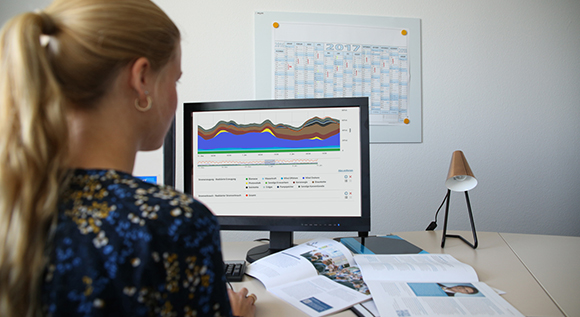Electricity market data now available for download – isn’t that SMARD?
Did you know that the SMARD online platform has allowed users to trace electricity market data in real-time since July 2017? At the end of 2017, new features were added, making the platform even more interesting for users to visit.
 © Bundesnetzagentur
© Bundesnetzagentur
“SMARD is a treasure trove for all those who are interested in the energy transition and in the electricity market in particular," Jochen Homann, President of the Bundesnetzagentur, said on the day the online platform was launched in July 2017. Rainer Baake, State Secretary at the Federal Ministry for Economic Affairs and Energy, added: “The platform is user-friendly and easy to navigate for everyone. It also offers a wide set of analysis tools for experts.” The Bundesnetzagentur is managing the platform on behalf of the Federal Ministry for Economic Affairs and Energy and had already announced that it would continue to enhance the SMARD platform in future.
Last December, it rolled out a major update, delivering a wide range of improvements for its users. By selecting the ‘download data’ section, users can now easily save all of the information displayed in the ‘visualise market data’ section on their computer.
Improvement no. 1: all data can be downloaded free of charge
Whenever users download data from the platform, they can decide whether they want to save the data as an Excel table or in another data format. This new feature can be used to download entire timelines that show about how much each source of energy has contributed to electricity generation over time, starting in January 2015. After selecting a particular time period, users can decide if they want the data to be displayed for every quarter of an hour, hour, day, week or year. All of the data can be downloaded free of charge and users also have the right to further process the data that they have downloaded (under the so-called CC BY 4.0 licence).
The SMARD data available for 1 January 2018 is particularly interesting: it shows that in the early hours of New Year’s Day, renewables were able to cover 100% of Germany’s electricity demand, with 40,000 megawatts delivered by wind power, hydropower and biomass alone.
Improvement no. 2: all of the platform is now available in English
All sections of the platform are now available, not only in German, but also in English. This is important as the energy transition also has a pan-European dimension. An ever increasing number of countries within the EU are switching to renewable energy. This is why SMARD offers key data about the electricity market not only for Germany, but also for Austria and Luxemburg. The three countries are part of the same electricity market area.
Improvement no. 3: updated list of German power plants
In addition to this, the Bundesnetzagentur has extended its list of German power plants to cover a total of 760 facilities. The list includes geographical information and master data such as location, plant operator, the main source of energy used, and rated output. For many power plants, photographs have also been included. The overview can be displayed either as a map or a table. Users also have the option to search for a particular power plant via a special interface.

